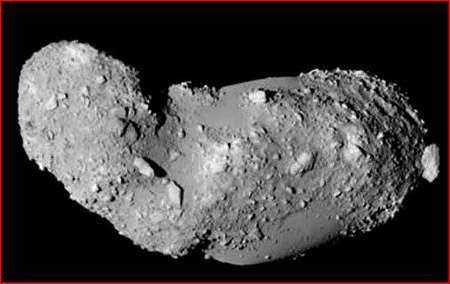The properties of a six-meter near-Earth object

(Phys.org) —Near Earth Objects (NEOs) are asteroids (or comets) whose orbits sometimes bring them close to the earth's orbit. Thus they could potentially collide with the Earth, giving them considerably more parochial interest than most objects in astronomy. The 1908 Tunguska event, for example, that flattened over 2000 square kilometers in Russia was by some basic estimates caused by an asteroid about 60 meters in diameter. The asteroid that struck Siberia last spring (the Chelyabinsk meteor) was only about 40 meters in diameter. While it is relatively easy to detect an NEO in visible light by watching its movement across the sky from night to night, determining its size is more difficult. This is because the optical brightness of an NEO is the result of two factors, its size and its reflectivity. CfA astronomers have for several years been using the IRAC infrared camera on Spitzer to measure the infrared light emitted from NEOs, and modeling the flux to determine the reflectivity and thus the sizes of NEOs.
NASA has decided to support a human mission to an asteroid, with the first step likely being the robotic recovery of an NEO. The current Asteroid Recovery Mission (ARM) concept proposes to robotically grab a smallish NEO (between five and ten meters in diameter) and tow it into an orbit around the Earth where a crew of astronauts would rendezvous with it and retrieve samples. Finding a suitable one is tough, however: the sizes of some smallish NEOs have only recently been determined (by infrared techniques), and a suitable one needs to be in an orbit close enough now for remote characterization but then returning to the immediate neighborhood in a few years for the recovery mission itself.
CfA astronomers Joe Hora, Howard Smith and Giovanni Fazio, together with their team, used the Spitzer Space Telescope to observe the NEO 2011MD. It turns out to be the smallest object ever seen with Spitzer, and was extremely faint, taking 19.9 hours to spot. The object is small enough that non-gravitational forces (that is, effects of radiation) can alter its path, and so knowing where to point the telescope required some complex calculations. Since it might have been even smaller, a non-detection would have been inconclusive since Spitzer might have pointed in the wrong direction.
As it happens a faint detection was made right in the expected location in the sky. Modeling of the emission, combined with earlier optical results, find that the object is about six meters in size (plus four or minus two meters). From its size, the astronomers conclude that its density is a tad more than water, about 1.1 grams per cubic centimeter, and that its composition is probably a rubble-pile with high macroporosity. The information will be used by NASA to decide whether or not to go after it - we'll keep you posted.
More information: "Physical Properties of Near-Earth Asteroid 2011 MD," M. Mommert, D. Farnocchia, J. L. Hora, S. R. Chesley, D. E. Trilling, P. W. Chodas, M. Mueller, A. W. Harris, H. A. Smith, G. G. Fazio, ApJLett, 789, L22, 2014. arxiv.org/abs/1406.5253
Provided by Harvard-Smithsonian Center for Astrophysics





















